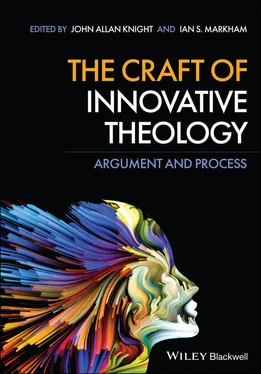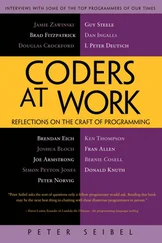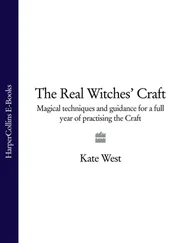At the second level, the book starts with Tinu Ruparell exploring the implications for theology of religious pluralism. He makes the case that all theology must take interreligious conversations seriously. Trevor Bechtel takes a serious look at the eating of animals; he argues that factory farming is deeply wrong and that no animal should be eaten that has not had a good life. Kathryn Blanchard looks at the debate in the US over COVID‐19 – health or business. She argues for a vision of business that takes seriously the full range of stakeholders. The last chapter at this level is written by Keith Ward; his essay argues that Christians should treat the language about the return of Christ in the same way as the creation narrative. To harmonize with the scientific narrative, we need to recognize that the language is not descriptive of the return of the resurrected Christ to Earth, but instead an affirmation that ultimately God’s providential plans for creation will be realized.
At the third level, we have two chapters on science and religion. Celia Deane‐Drummond reflects on what it means to be distinctively human. She advocates for getting away from “Image of God” language and instead drawing on Christology. Christopher Southgate argues that although evolution is true, it does create real problems for theology. His suggested solution is a compound theodicy. Andrei Buckareff looks at hell, suggesting that persons in hell will not necessarily be “unhappy” and that there is always an option to escape. Finally, in this third level, Martyn Percy invites the reader to see how all faith is conditioned in different ways by the culture in which it grows.
At the fourth level, we have Leigh Vicens who provides a nuanced account of the concept of responsibility. Given that no human can avoid sinning, in what sense should we be held responsible? Demonstrating mastery of the literature, she sees blame as a moral protest concept; it is not so much the person that is blamed but the actions that we do. The other level four essays are all in Part VI. John Knight teases out some linguistic assumptions underpinning liberal theology. Cass Fisher looks at the way in which Jewish studies should be developing the arguments for “theological reference” (namely you can properly refer to God) rather than continuing to deny the legitimacy of theological reflection. And finally, John Knight in the last essay in the book, takes a particular argument – the slingshot argument of Marshall – and shows that it does not invalidate correspondence theories of truth.
One goal here is to create the “self‐conscious” reader who can see and appreciate good academic writing. At the end of this book, you will understand the achievement of these different essays. In so doing, when you read other articles and books you will be able to place and recognize the achievement of those texts. But before moving on to the chapters we’ve just mentioned, let’s turn to the basic elements of publishable academic writing.
For the Student: Basics of Writing for Publication
In this section we’ll do three things. We’ll first talk about the importance of asking a good question (which in your writing you’ll attempt to answer). Next, we’ll introduce the basic parts of any good essay. Finally, we’ll say a few words about the process of producing a publishable essay. 1
Every Good Piece of Writing is an Answer to a Question
When reading any source, whether it’s an ancient text or a scholarly book or article, it’s important to figure out just what question the author is asking. That is the first step in any good interpretation. But focusing on the question is important not only for reading well but also for writing well. When you’re setting out to write an essay, make sure you have a good question. But what makes a question a good one? To our minds, a good question has several characteristics. First, it should be authentic – that is, it should be original to your essay. That doesn’t mean that no one has ever asked it before. Rather, it should be a question that either has not been answered or has not been answered to your satisfaction. In your hands it is a question that can yield an original contribution to scholarship in theology. And making an original contribution will be the most important consideration in determining whether your essay is publishable.
Second, a good question is one that is answerable. There are two parts to this characteristic. First, there must be evidence or arguments capable of supporting a reasonable answer. Take, for example, the following question: “What did prehistoric people think were the most persuasive forms of argument?” Since the people in question are prehistoric, there won’t be any evidence to support an answer. Second, it must be capable of an answer within the space constraints of the journal – normally around twenty pages or so. “How have the relations between church and state changed in Europe between the middle ages and the present?” It’s questionable whether a book would have sufficient room for an adequate answer to that question; certainly an article is too short.
Third, a good question is one that is consequential. If the answer to the question – your thesis – is shown to be true, there will be consequences for the field. Perhaps it will open up new ways of thinking about some particular question; perhaps some conventional view will have to be changed. These consequences tie into the question of motivation. What is motivating you to write this essay? Very often it will be to provide a counterargument to some view you think mistaken. It might be to lay the groundwork for a new direction in addressing some theological issue. Essentially, a good question can provide a follow‐up answer to “So what? So what if you’re right?” If you’ve formulated a good question, you’ll be able to answer the “So what?” question by articulating the consequences of your answer. And these consequences should be spelled out in your conclusion.
Every Good Piece of Writing Has a Beginning, a Middle, and an End
A Beginning: The Introduction
We find it helpful to write the introduction first, to make explicit how we want to proceed. But most often it will need to be rewritten after the essay is substantially completed, as arguments regularly change a bit during writing. But in the final draft of your introduction, make sure the argument is clear. How do you know if it’s clear? Suppose you’re on the subway and strike up a conversation with the person seated next to you. If that person asks you to explain the argument in your paper before she gets off at the next stop, could you explain it without resorting to technical vocabulary? That clear, concise explanation should be included in your abstract and your introduction.
The introduction should serve four functions. First, it should contextualize your essay. A good introduction will describe previous work on the subject and show that there is a problem or a lacuna in the literature that needs to be addressed. Second, the introduction should show exactly how your essay addresses the problem. This is where you will state the precise question you will be answering and the thesis for which the essay will argue. Third, it’s very helpful if the introduction provides a brief roadmap of your argument that states in a concise and orderly way the explanation you gave to the hypothetical person on the subway. Editors are busy people; don’t make their job harder than it needs to be. When an author makes their job easier by making clear, right in the introduction, what the essay will argue, the whole process goes more smoothly and quickly. Fourth, make sure to mention the broader implications of your essay for contributing to some ongoing conversation. You can spell this out in more detail in the conclusion, but it should be mentioned in the introduction.
Читать дальше











